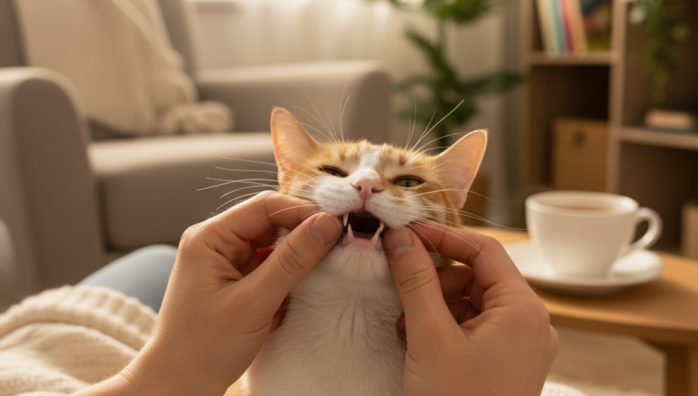Recognizing cat gum disease early
by admin in Pet Care Basics 14 - Last Update November 19, 2025

I used to think my cat’s slightly fishy breath was just a normal “cat thing.” It’s a mistake I see so many loving pet owners make. It wasn\'t until a routine vet visit that I learned that persistent bad breath was actually the first subtle sign of gingivitis. It was a wake-up call, and it made me realize how easily these early warnings can be missed. Our cats are masters at hiding discomfort, so it’s up to us to become detectives for their dental health.
What i learned about the stages of feline gum disease
My vet was fantastic and explained it in a way that really stuck with me. Feline dental disease doesn\'t just appear overnight; it progresses in stages. Understanding them helped me grasp why early detection is so critical.
Stage 1: Gingivitis
This is the earliest stage and, thankfully, the only one that is completely reversible. It’s essentially an inflammation of the gums caused by plaque buildup. The gums might look a little redder or more swollen than usual, especially right where the tooth meets the gum line. This is the stage my cat was in, and I was so relieved we caught it here.
Stage 2-4: Periodontitis
If gingivitis is left untreated, it can progress to periodontitis. This is where the real damage happens. The infection gets below the gum line and starts to damage the supporting tissues and bone of the teeth. This is irreversible and can lead to severe pain, tooth loss, and even impact other organs. It really hammered home for me that I\'m not just looking for clean teeth, but for healthy gums.
Subtle signs you should never ignore
After my experience, I created a mental checklist of things to watch for. These are the subtle clues that I now take very seriously. Many of these aren\'t dramatic, which is why they\'re so easy to overlook.
- The \'new\' bad breath: I\'m not talking about the faint smell after a tuna treat. This is a persistent, unpleasant odor that you start to notice more often. It was the first sign I missed.
- Red or puffy gums: Look for a thin red line along the gum margin. Healthy cat gums should be a pale, healthy pink.
- Dropping food or chewing differently: Have you noticed your cat tilting its head to chew on one side, or dropping kibble from its mouth? This was something I only noticed in hindsight. It can be a sign of a painful tooth.
- Drooling more than usual: A little drool can be normal for some cats when they\'re happy, but excessive or new drooling can signal oral pain.
- Reduced grooming: When a cat\'s mouth hurts, they may be less inclined to groom themselves, leading to a scruffy or unkempt coat.
My simple at-home check routine
I was initially nervous about looking inside my cat\'s mouth, but we\'ve developed a calm routine. I now do a quick \'lip flip\' once a week when he’s relaxed and purring on my lap. I don\'t force it; I just gently lift his upper lip on each side for a few seconds to check the color of his gums and look for any obvious tartar. This is just my screening process. Anything that looks unusual gets a call to the vet. This is just what works for us, and I always recommend discussing a preventative care plan with your veterinarian, as they can guide you best.











